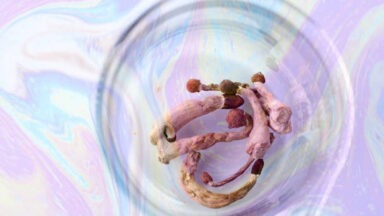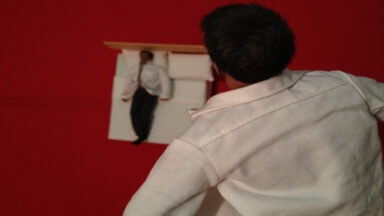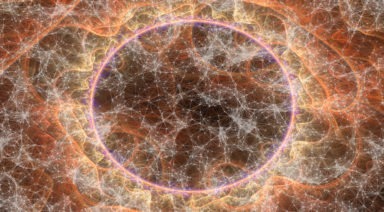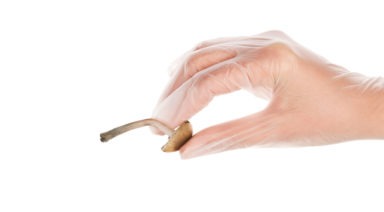Oldest Evidence of Ayahuasca Use Found in Ancient Shaman’s Stash

Bolivian archeologists found what appears to be the world’s oldest evidence for the use of the psychedelic brew ayahuasca, in a shaman’s stash alongside a slew of other psychoactive substances. The ancient drugs were found in a 1,000-year-old pouch made of fox snouts in a cave in Cueva del Chileno in the highlands of the Andes.
The shaman’s pouch was originally thought to be a leather shoe when it was discovered back in 2010, but upon further inspection proved to contain a bundle with a headband, llama bone utensils, and various devices meant for crushing and inhaling psychoactive powders – a toolkit of primitive paraphernalia.
1000-Year Old Ancient Drugs
In addition, the shaman’s pouch contained a pharmacopeia of psychotropic herbs and plants containing DMT, such as chacruna, harmine (an ayahuasca compound), bufotenine (a DMT analogue found in toad venom), cocaine and a cocaine metabolite, and possibly psilocyn a psychoactive component of magic mushrooms.
According to Jose Capriles, an archeologist at Penn State University and one of the authors on the discovery’s paper, the array of psychotropic herbs found in the shaman’s pouch would have had to be sourced from very disparate areas of the Amazon, meaning this DMT shaman would have travelled many miles or had access to extensive trade routes to acquire his stash.

Shaman’s pouch made of fox snouts stitched together courtesy natgeo.com
The history of ayahuasca in the Amazon is believed to have been passed down over centuries –about 5,000 years— according to indigenous cultures, despite debate by western archeologists studying its history. But when it comes to western studies of ayahuasca, western academia is often stumped by the many inexplicable facets of the brew.
Such as how, out of 40 thousand plant species in the Amazon, did indigenous people know to combine specific vines and plants containing DMT and a substance that negates a very specific enzyme in the gut, to produce the most potent hallucinogen known to man. Not to mention the vast troves of medicinal combinations of those plants, which indigenous shamans and doctors say were revealed to them under the influence of ayahuasca.
In Jeremy Narby’s 1998 book The Cosmic Serpent, documenting his time spent among the indigenous Ashaninka tribe of Brazil, he concludes that the discovery of the DNA double helix strand was influenced by visions seen under the influence of ayahuasca. Narby says he believes the brew allows shamans to shrink their consciousness to the molecular level to “gain access to DNA-related information, which they call animate essences or spirits.”
Now with this recent discovery, it has become apparent that the use of these psychedelic substances was widespread and likely considered extremely valuable as tools of knowledge and spiritual sacrament. And as these substances slowly become more popular tools of healing and medicine in the western world, it seems we may be on the verge of discovering what indigenous cultures have held sacred for so many years.
For more on the shamanic rituals involved with ayahuasca and other psychedelics check out our series Psychedelica:
Study Shows Microdosing Psilocybin Boosts Mood, Mental Health

A new study provides the most compelling evidence to date on the impressive mental health benefits of microdosing psilocybin.
While there has been an ever-increasing number of studies showing the efficacy of treatment of mental health disorders with psychedelics, there has been relatively little research on the practice of microdosing.
Microdosing, or repeatedly taking small, barely perceptible amounts of psychedelics, has been exponentially increasing in popularity, with a wide range of people reporting a multitude of improvements to their psychological wellbeing.
The latest scientific study to look at the effects of microdosing was conducted by researchers at the University of British Columbia, as well as other leaders in the fields of psychology and mycology. The study followed 953 people who used small, repeated doses of psilocybin for about 30 days, as well as a control group who did not microdose.
While the exact dosages of psylocibin that participants self-administered varied somewhat, they were all low enough to not impact daily functioning.
Over a one-month period, participants took these psylocibin microdoses three to five times per week and were asked to complete a number of assessments through a smartphone app that tracked their mental health symptoms, mood, and measures of cognition. The findings definitively showed that the microdosing participants demonstrated greater improvements in mood and mental health than those in the non-microdosing control group.




































